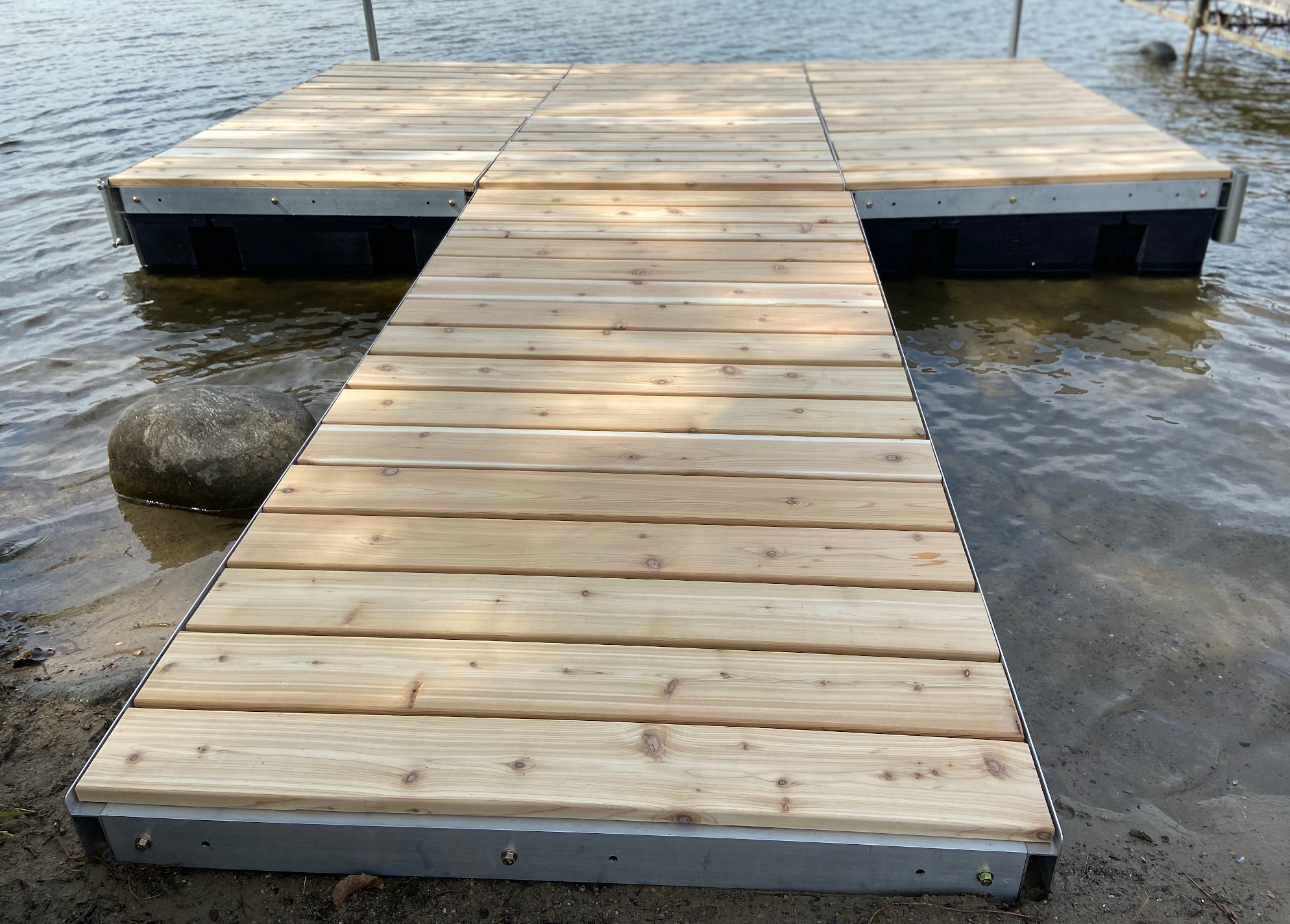Optimizing Your Outdoor Room with Specialized Floating Dock Providers
Optimizing Your Outdoor Room with Specialized Floating Dock Providers
Blog Article
Upgrade Your Waterfront With Sturdy Floating Docks
Upgrading your waterfront with long lasting floating docks can considerably improve both capability and looks, providing a versatile service for numerous water tasks. With an array of materials available, including low-maintenance choices and typical wood, selecting the best dock can match your individual design and fulfill practical needs.
Benefits of Floating Docks
Floating docks deal a wide variety of advantages that boost their charm for various maritime applications. Unlike typical fixed docks, floating docks increase and fall with the trend, making sure consistent accessibility for watercrafts and watercraft no matter of environmental problems.
Furthermore, floating docks are simpler to install and transfer, supplying flexibility for short-lived or seasonal usage. Their modular layout enables customization to fit details needs, whether for exclusive marinas, domestic beachfronts, or industrial applications.
Additionally, floating docks produce marginal disruption to the marine setting, preserving regional ecological communities and lowering the chance of disintegration. They also supply improved safety and security for individuals, as their resilient nature uses a much more forgiving surface than stiff frameworks.
In addition, floating docks can help with a diverse variety of tasks, such as angling, swimming, and entertainment boating, making them a valuable possession for waterside advancement. Their convenience and usefulness make floating docks a recommended option for a variety of maritime projects.
Choosing the Right Materials
Selecting suitable materials for floating docks is important to their durability, performance, and general performance. When picking products, take into consideration variables such as ecological direct exposure, upkeep demands, and structural stability. Typical materials include timber, plastic, aluminum, and composite alternatives, each offering distinctive benefits and negative aspects.
Timber, while visually pleasing, needs routine maintenance to avoid rot and decay. Pressure-treated wood can enhance resilience, however it might still yield to water damages gradually. Plastic floats, typically made from high-density polyethylene, are resistant to rust and need very little upkeep, making them an appealing option for low-maintenance applications.
Light weight aluminum is one more practical choice, understood for its strength and lightweight properties. It is immune to corrosion and can withstand harsh weather, although it might be a lot more costly than other materials. Compound products combine the finest qualities of timber and plastic, providing a durable and low-maintenance alternative that mimics the appearance of timber without the connected drawbacks.
Inevitably, the choice of product must align with the meant usage, environmental factors to consider, and budget restraints, making sure a durable and practical floating dock that meets your certain needs.
Setup Refine Summary
The effective installation of a drifting dock depends on cautious preparation and execution, making certain that it operates properly in its intended setting. click for source The very first step entails examining website conditions, including water deepness, coastline features, and dominating weather patterns, which will certainly inform the dock layout and anchoring system.
Following the website analysis, the following stage is to prepare the floating dock parts. This consists of setting up the framework, securing drifts, and affixing any essential equipment. It is critical to make resource certain that all connections are durable and water-resistant to stand up to aquatic conditions.
When the dock is constructed, the installment procedure starts with placing the dock in the water. This can entail a crane or various other lifting tools, especially for larger frameworks. Correct alignment is important for functionality and safety.

Maintenance Tips for Longevity
Routine upkeep is vital for ensuring the durability and optimal performance of a drifting dock. To accomplish this, start with routine assessments a minimum of twice a year, concentrating on the stability of the dock's framework, including the flotation protection tools and linking equipment. Look for indications of wear, rust, or damages, and deal with any kind of issues without delay to avoid more wear and tear.
Cleansing is one more critical element of maintenance. Eliminate debris, algae, and barnacles from the dock's surface area to stop unsafe problems and preserve visual appeal. Use a mild detergent and a soft brush to stay clear of damaging the dock's products.
Furthermore, ensure that the dock is appropriately secured and secured to stand up to seasonal adjustments in water levels and weather condition conditions. Inspect the anchoring system for security and make modifications as required.
Enhancing Your Outdoor Visual
To create a visually enticing outside room, including check that a floating dock can considerably improve the overall aesthetic of your waterfront residential property. Floating docks are not only functional yet can additionally function as a striking centerpiece that matches the natural environments - floating docks. Available in numerous products and styles, these docks can be customized to match your residential or commercial property's architectural design and landscape
The enhancement of attractive aspects, such as integrated lighting or stylish barriers, better boosts the dock's aesthetic appeal. Take into consideration utilizing all-natural timber surfaces, which blend seamlessly with the atmosphere, or going with modern-day materials like light weight aluminum or composite outdoor decking that use a streamlined, modern look.
Strategically positioning planters or seating locations on or around the dock can develop inviting rooms that urge leisure and pleasure of beachfront sights. Furthermore, incorporating shades and textures that integrate with your landscape will develop a cohesive visual throughout your outdoor location.

Conclusion

Updating your waterside with durable floating docks can dramatically improve both functionality and appearances, supplying a functional service for numerous water tasks. Unlike standard fixed docks, floating docks surge and autumn with the trend, guaranteeing regular ease of access for watercrafts and watercraft no matter of ecological conditions.Picking proper materials for floating docks is important to their long life, performance, and general effectiveness.When the dock is constructed, the installation procedure begins with placing the dock in the water.In recap, floating docks offer countless advantages, including flexibility to water level adjustments and a range of product options.
Report this page